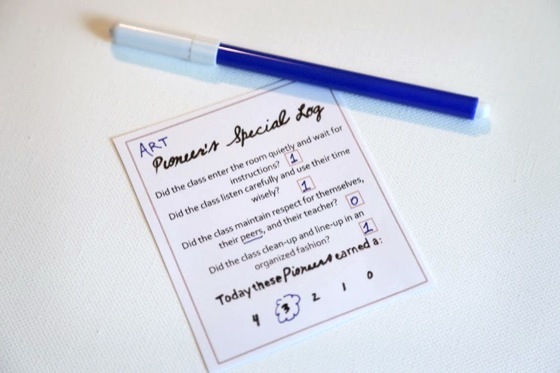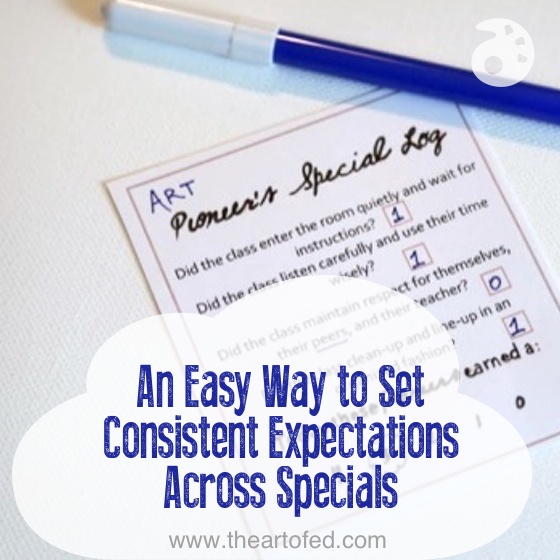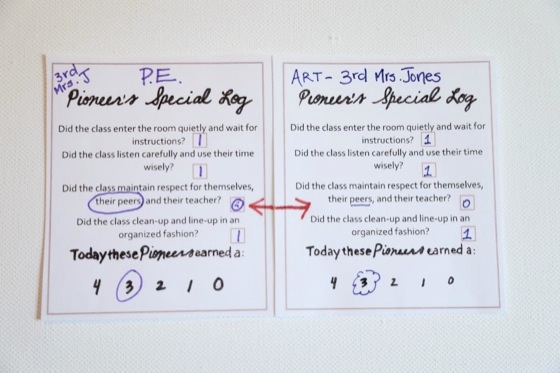When I entered my first classroom it was apparent that classroom expectations throughout the school took on many different forms. If an issue arose in my classroom I might handle it one way while another specialist teacher handled it a different way. It is hard to know how to create a sense of consistency for your students when every teacher is doing something different.
It’s been said that “variety is the spice of life,” and as an art teacher I cannot agree more! However, variety in student expectations can become a huge issue, especially in the case of specials. For instance, I’m a big fan of having students enter my room quietly. If they come in talking loudly, messing with each other, or distracted from whoever just put their mouth on the water fountain it starts my class off on the wrong foot. In the case of a rowdy entrance, I would make them try coming in again. But what if another specialist doesn’t have the same expectation? Or does, but doesn’t enforce it? That “variety” will only perpetuate the bad habit. Even the same teacher can be inconsistent from week to week depending on stress, sleep, lifestyle, and the troublemaker from the previous class that smeared paint all over her nice pants.
We all know we’ve got to start off the year explaining, demonstrating, and enforcing expectations.
How fabulous would it be if all the specials classes had a few of the same expectations and they implemented them in a consistent manner?
The expectations can be as simple or as complex as you and your specials team choose. To help communicate your collective expectations to the students and to the classroom teachers, you can use a pre-printed pad of paper.
Sample expectations could include:
1. Did the class enter the room quietly and wait for instructions?
2. Did the class listen carefully and use their time wisely?
3. Did the class maintain respect for themselves, their peers, and their teacher?
4. Did the class clean-up and line-up in an organized fashion?

At the appropriate time throughout the class period the students are asked each question. With the teacher’s guidance, the students evaluate their behavior on a scale from zero to four. This gives the students ownership of their own behavior, and also reminds them of the expectations. At the end of the hour, each specials teacher totals up the points and hands the sheet to the classroom teacher. Imagine if classroom teachers got these slips from each specialist! Everyone would have a much better idea of what behaviors needed to be worked on in different environments. Plus, the teachers and students would have a good sense of consistency throughout each of their specials classes.
There are many different ways to manage scoring and points. I would encourage you to not make it too competitive amongst classes, as low-performing classes might become discouraged. The best bet is to set a goal for each class. Occasional “bonus” points can keep things interesting as well. The students love this system because they are competing for “points” towards a goal that they can understand and appreciate. The classes that reach their goals get to celebrate in their specials class with a small treat or fun activity.
As a profession, we will always be striving for better continuity in teacher expectations. I hope that using this style of documentation helps you set the stage for a great school year, one where the students know they will be held to the same standards no matter where they are in the building.
Do you and your team of specialists have similar expectations or do teachers do things differently?
How is your system working out? Do you wish you could change it?
Magazine articles and podcasts are opinions of professional education contributors and do not necessarily represent the position of the Art of Education University (AOEU) or its academic offerings. Contributors use terms in the way they are most often talked about in the scope of their educational experiences.






